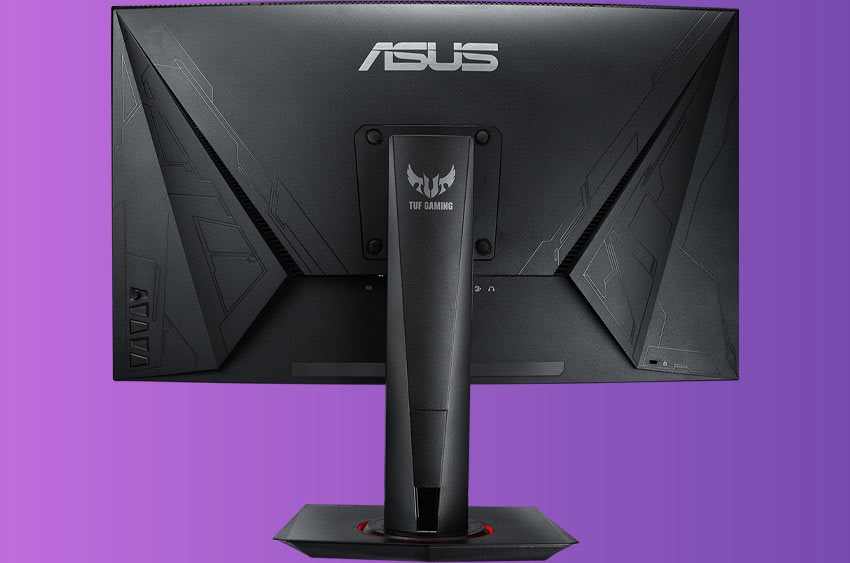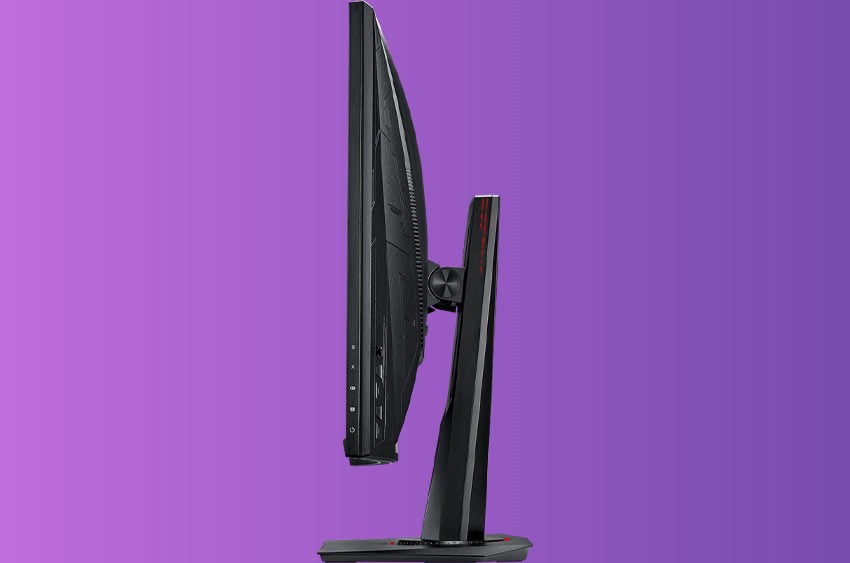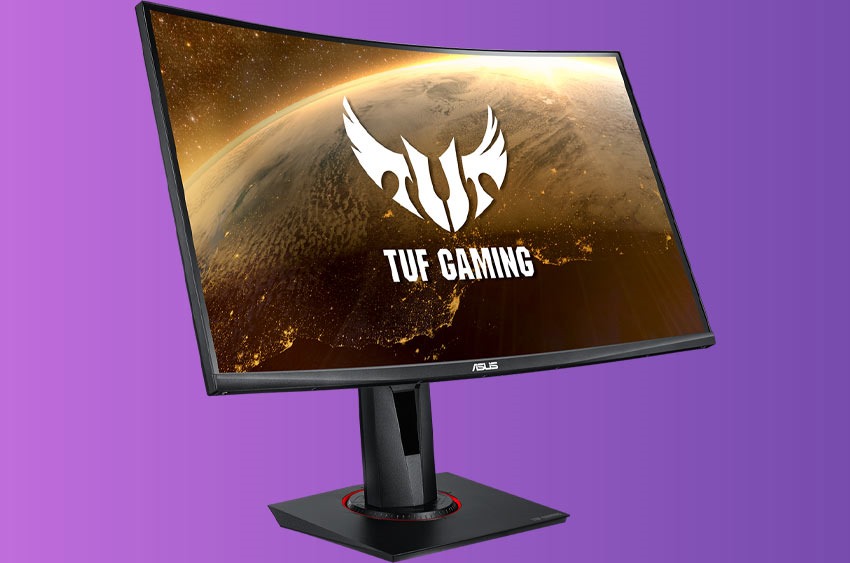
There’s a new generation of console gaming and a grumpy old PC uncle in the corner who’s surprisingly fit for his age, but all of that lovely new hardware means nothing if you don’t have a screen to broadcast it on. Most of us are happy to use the tried and tested TV method, especially those of us who just got their hands on an LG CX OLED display.
For those of us who prefer more compact solutions, PC monitors still have a lot to offer. There’s no shortage of brands, styles, sizes, or the SABC encroaching on your territory demanding money in a desperate effort to stay relevant, and the Asus TUF VG247W is a fantastic piece of curvy display technology. Just don’t expect it to be next-gen console ready.

Out of the box, there’s a lot to appreciate here. 27 inches of screen, a 2560×1440 panel with 1500R curvature and 16:9 WQHD specs on a TFT-LCD VA Panel is solid technology any day of the week. The headline act though is a 1ms response time and support for up to 165Hz through DisplayPort 1.2 or 144Hz with HDMI 2.0.
For inputs, you’ve got one DisplayPort 1.2, two HDMI 2.0 ports, a pair of 2W speakers, a 3.5 mm earphone jack, and a side control panel.The included swivel stand allows allows for 180 degrees of motion and is built like a brick outhouse. So what’s it like in action? Pretty darn good! As a gaming monitor, the VG27W is rock-solid at nailing the basics.
Game colours pop beautifully, images look sharp and thanks to FreeSync technology I didn’t encounter any screen-tearing whatsoever. My goal when I received the review unit was to see how well it would do as next-gen console monitor. With both the Xbox Series X and PlayStation 5 plugged in, games running through the display looked fantastic and sharper than a samurai sword at the maximum resolution.
BUT, there was a catch. For the life of me, I just could not get any of the select few games capable of doing so, to run at 120 frames per second. For games like Dirt 5 and Devil May Cry 5: Special Edition, that extra boost in frame rate is a key selling point. Is it the final word in gaming? That’s debatable. Is it a feature that I could get working on the VG27W? Not a chance.

Try as I might, I just could not bump the frame-rate further than 60fps on the monitor, although this was in no way a fault of the screen itself. Next-gen consoles have a lot to offer, but they’re also temperamental beasts that refused to play nice with the new devices. On the other hand, I could see the increased frame-rate with PC games when I hauled the screen over to a friend’s house, and the results were lovely. For console though, I am absolutely baffled at how stubborn they remain.
As a beefy boy that can still play those games on new Xbox and PlayStation consoles at 60fps, I was still more than happy. Godfall may be godawful, but it’s application of all the particle effects admittedly looked fantastic, as did Gears 5, Yakuza: Like a Dragon, Assassin’s Creed: Valhalla, Devil May Cry 5, Tetris Effect, and Dragon Ball Z: Kakarot. As mentioned, screen-tearing was nowhere to be seen, although the HDR wasn’t always running at full speed.

I know it’s unfair to compare to an OLED, but the VG27W’s HDR, even in comparison to a regular UHD TV, is a tad bit muted. The screen maxes out at 400 cd/m2 brightness, barely improving on games and actually resulting in me switching HDR off to enjoy a better picture where the 120% colour gamut made SDR visuals pop better. It’s not that the VG27W is bad at providing HDR content, but it’s not excellent either. When you’ve been spoiled by better technology, it’s hard to take a voluntary step down.
And its R9000+ price point, you have to ask yourself what really matters to you: A higher resolution and polished HDR, or that 1ms response time, VRR support and excellently high refresh rates? That’s a tough choice to make, and one that’s becoming even harder as similarly-priced competition begins to offer newer and better features.
Last Updated: December 3, 2020
| Asus TUF VG27W | |
|
The VG27W is a great monitor if you have a particular direction that you like to focus on in your gaming, but in an industry where new TVs are becoming Jacks and masters of all trades, it’s a hard sell when the device on display isn’t as flexible as its competition.
|
|
|---|---|





















Plague Doctor Who
December 3, 2020 at 20:05
32″ > 27″
For inputs, you’ve got one DisplayPort 1.2, two HDMI 2.0 ports,
So, in conclusion if you want to even enjoy any of that HDR you’re forced to using HDMI since DP1.2 isn’t capable of doing HDR due to its bandwidth limitations. Since majority of these panels are mislabeled by their marketing teams.